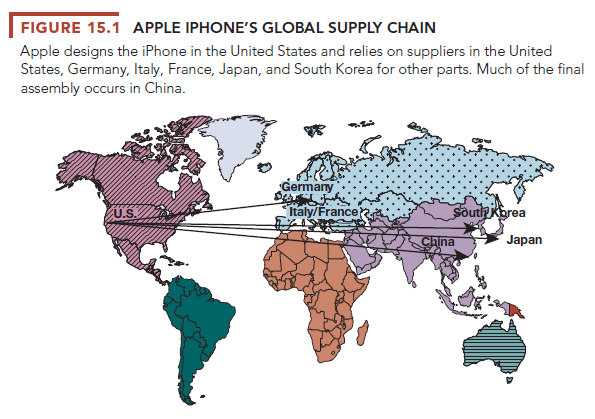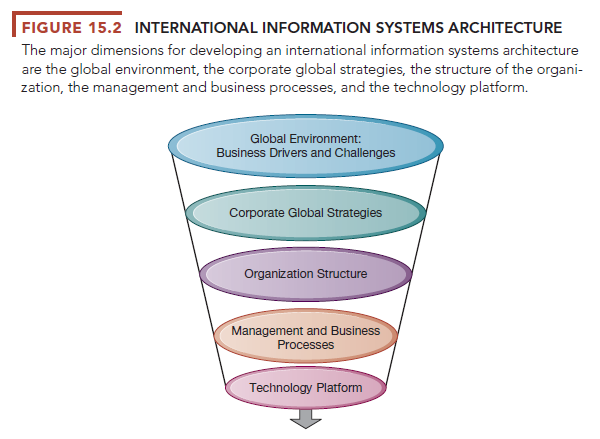This chapter describes how to go about building an international i nformation systems architecture suitable for your international strategy. An international information systems architecture consists of the basic information systems required by organizations to coordinate worldwide trade and other activities. Figure 15.2 illustrates the reasoning we follow throughout the chapter and depicts the major dimensions of an international information systems architectue.

The basic strategy to follow when building an international system is to understand the global environment in which your firm is operating. This means understanding the overall market forces, or business drivers, that are pushing your industry toward global competition. A business driver is a force in the environment to which businesses must respond and that influences the direction of the business. Likewise, examine carefully the inhibitors or negative factors that create management challenges—factors that could scuttle the development of a global business. Once you have examined the global environment, you will need to consider a corporate strategy for competing in that environment. How will your firm respond? You could ignore the global market and focus on domestic competition only, sell to the globe from a domestic base, or organize production and distribution around the globe. There are many in-between choices.

After you have developed a strategy, it is time to consider how to structure your organization so it can pursue the strategy. How will you accomplish a division of labor across a global environment? Where will production, administration, accounting, marketing, and human resource functions be located? Who will handle the systems function?
Next, you must consider the management issues in implementing your strategy and making the organization design come alive. Key here will be the design of business processes. How can you discover and manage user requirements? How can you induce change in local units to conform to international requirements? How can you reengineer on a global scale, and how can you coordinate systems development?
The last issue to consider is the technology platform. Although changing technology is a key driving factor leading toward global markets, you need to have a corporate strategy and structure before you can rationally choose the right technology.
After you have completed this process of reasoning, you will be well on your way toward an appropriate international information systems portfolio capable of achieving your corporate goals. Let’s begin by looking at the overall global environment.
Source: Laudon Kenneth C., Laudon Jane Price (2020), Management Information Systems: Managing the Digital Firm, Pearson; 16th edition.

I got what you intend, appreciate it for posting.Woh I am pleased to find this website through google. “It is a very hard undertaking to seek to please everybody.” by Publilius Syrus.